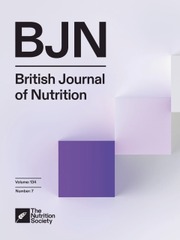No CrossRef data available.
Article contents
Reporting completeness and methodological quality of guidelines for nutritional care of critically ill patients: a meta-research utilising Reporting Items for practice Guidelines in HealTh care (RIGHT) and Appraisal of Guidelines for Research and Evaluation II (AGREE II)
Published online by Cambridge University Press: 30 January 2025
Abstract
Studies have demonstrated that the quality and transparency of reporting clinical practice guidelines (CPG) in health care are low. This meta-research aimed to evaluate the adherence of nutrition CPG for critically ill adults to the Reporting Items for practice Guidelines in HealTh care (RIGHT) checklist and its association with the methodological quality assessed by the Appraisal of Guidelines for Research and Evaluation II (AGREE II), along with other potential publication-related factors. A systematic search for CPG until December 2024 was conducted. RIGHT and AGREE II were applied. Eleven CPG were identified, none demonstrated adherence greater than 60 % to the RIGHT checklist and the mean RIGHT score was 33·5 ± 15·5 %. There was a strong correlation between the RIGHT score and AGREE II (r 0·886). A development CPG team including methodologist and/or statistician was associated with a higher RIGHT score (48·9 ± 4·5 v. 27·2 ± 11·0), and it was higher in CPG recommended or recommended with modifications by AGREE II in comparison to those not recommended (50·1 ± 4·6 v. 37·7 ± 8·1 v. 17·0 ± 6·8), and in those with acceptable and moderate compared with those with low methodological quality (50·1 ± 4·6 v. 32·2 ± 14·5 v. 19·3 ± 6·2). It was also related to the language of publication, being higher in those published in English. The reporting completeness in CPG for critically ill adults was low, with a strong correlation with the methodological quality. High values of reporting completeness scores were observed between CPG recommended by AGREE II (with moderate or acceptable quality) and in those including a methodologist/statistician in the development team.
Keywords
- Type
- Research Article
- Information
- Copyright
- © The Author(s), 2025. Published by Cambridge University Press on behalf of The Nutrition Society



